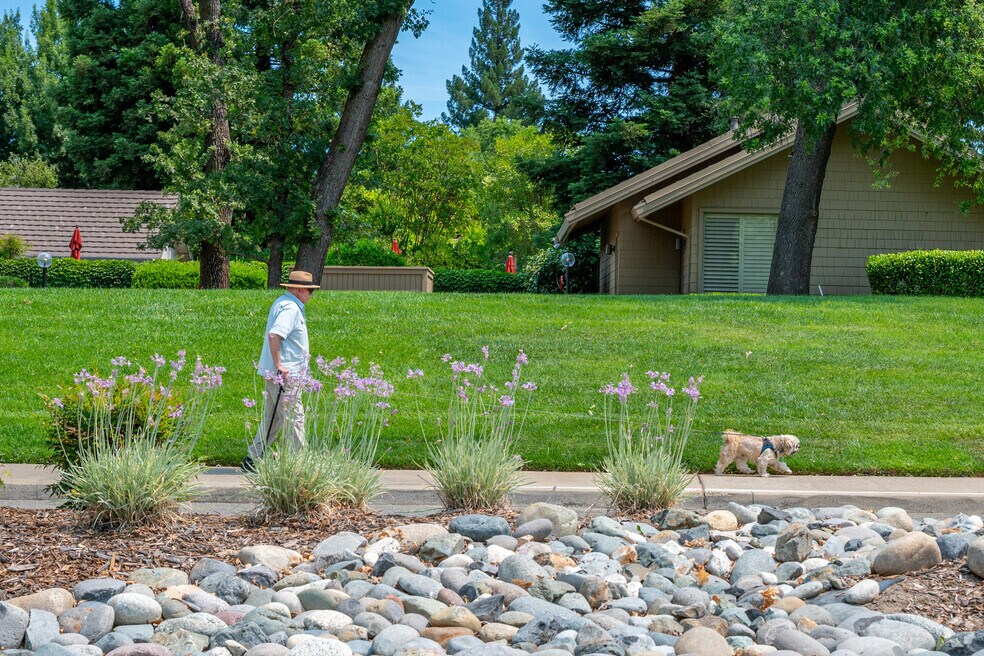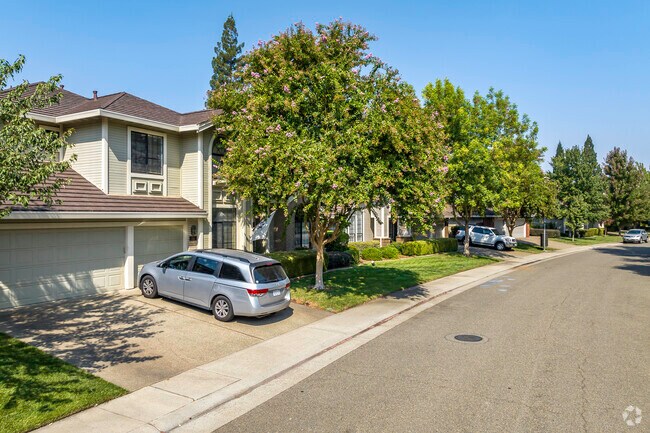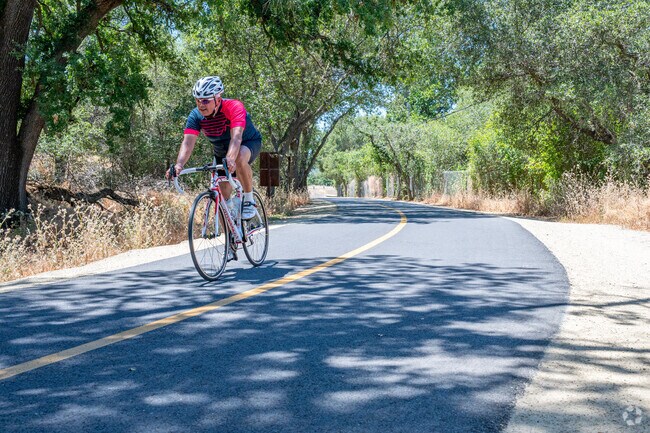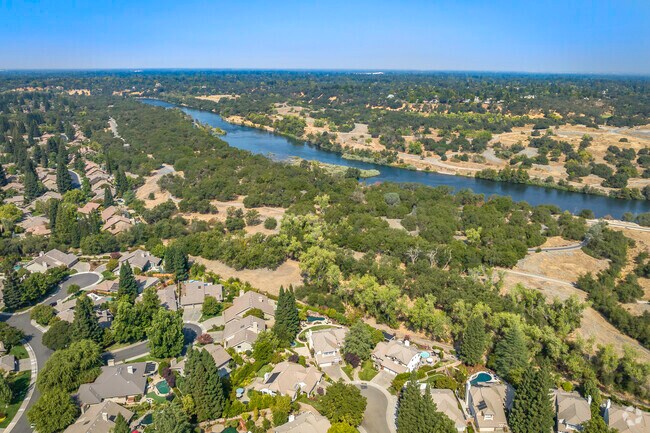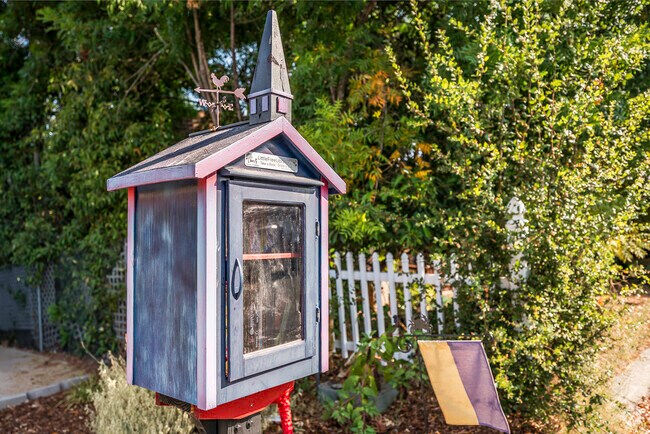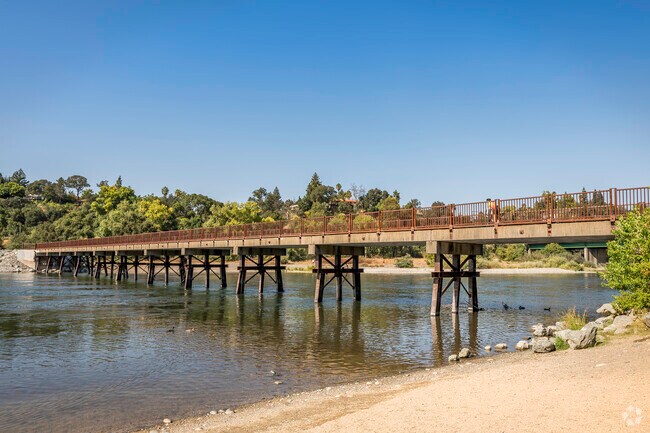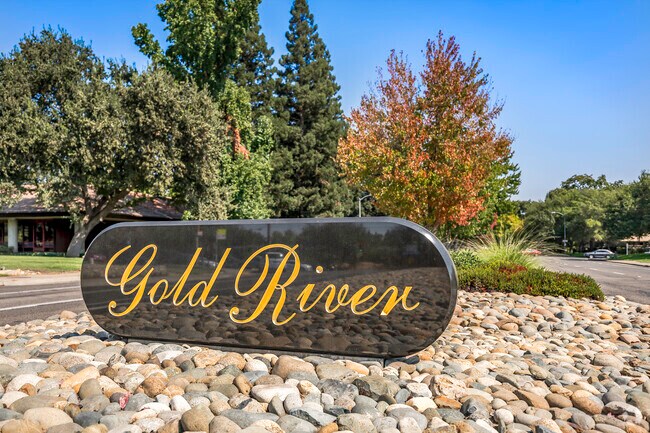Luxury community next to the American River
Gold River maintains the hideaway feeling that miners must have felt in the 1850s, when a gold rush brought fortune-seekers to the area. “If you’re coming from outside of Sacramento, you wouldn’t even know this place exists,” says Mark McDonough, a resident since 2022 and a local Realtor since 2016. “That’s made it pop in the last ten years. It’s now one of my top five neighborhoods for a resort-style vibe.” About 16 miles east of Sacramento, this planned community comprises 25 subdivisions next to the American River. Robert C. Powell Development Company built more than 70% of it in the 1980s and 1990s. With brown coloring and a midcentury style, these “Powell homes” have become a staple of the area. The developer also emphasized access to nature, preserving valley oaks and creating greenways between subdivisions. Close to the American River Bike Trail, shopping centers and Sacramento, this centrally located suburb is almost a city on its own. “You have nearby business hubs and everything close by,” says McDonough, “so you’re not going to leave often.”
Powell homes and Gold River Brown, neighbors chat floor plans
Driving into Gold River for the first time, uniformity is the first thing to notice. “If you love brown, you’ll love living here,” says McDonough. “And when I say brown, I mean Gold River Brown by Sherwin Williams. All the Powell houses are that color because of the homeowners association.” While this lack of exterior character might turn some people off, it comes with perks: the association maintains streets, sidewalks and lawns, so residents won’t have to do much upkeep. If a tree falls, for instance, it will be replaced soon. Strict rules ensure that driveways and streets are clear of cars, boats and trailers, under penalty of sizeable fines. Dues are paid to both the Gold River Community Association and, depending upon the community, the subdivision’s individual association. Some communities have different rules than others, so residents should read the fine print before buying. Additionally, some communities have clubhouses, sports courts and other amenities, and some are gated with security patrols.
Exteriors may be similar, but differing interiors are often a talking point between neighbors. “There’s a niche subculture here with the floor plans,” McDonough continues. “People will ask which Powell Home you have or which layout you have.” Single-family ranch-styles make up most of the neighborhood, and since they were mostly built in the 1980s and 90s, they may need some updates. Two bedrooms can go between $500,000 and $675,000. Three-bedrooms can be found at the lower end of this range, but they can also go up to a million. The same can be said for non-Powell homes, which usually have four bedrooms and two stories. Manor homes are mixed in, too: they’re triplexes with two-bed units on either side and a three-bed unit in the middle. Two-bed condos and townhomes are rare, mostly in the Promontory Point neighborhood. Whatever the property type, high demand has led to most homes selling in 23 days, quicker than the national average of 43 days.
American River access, Lakes Natoma and Folsom
Weaving between communities, greenways hold over 5 miles of walking trails, and they feature valley oaks and other native species. These paths lead to playgrounds and lawns at Gold River, Prospect Hill and Gold Station Parks. Heading west, they lead to Gold River Sports Club, a recreation facility that’s been serving the development since 1985. It has 22 tennis courts, two pools, fitness classes and other amenities. The American River Bike Trail runs along the northern side of the neighborhood, and it’s a 32-mile waterside route from Sacramento to Folsom. Moving east on the trail, the river widens past Nimbus Dam and becomes Lake Natoma. This is a popular spot for boating and water sports, and Sacramento State Aquatic Center is here for kayak, canoe and paddleboard rentals. Continuing 8 miles north, the American River Bike Trail ends at Beal’s Point, where nature lovers can enjoy an even bigger lake. Lake Folsom, at about 18 square miles, has sandy beaches and more boating opportunities. The California Department of Fish and Wildlife also stocks the water with rainbow trout, a common target for bait in the spring and fall.
High marks for San Juan Unified Schools
This district has open enrollment, but Gold River students are within the boundaries of two top-rated schools. Gold River Discovery Center serves kindergarten through eighth grade, right in the middle of Gold River. It gets an A-minus from Niche and ranks as their No. 9 best public middle school for Sacramento County, ahead of 83 others. For later grades, though, students have to travel 12 miles west to Rio Americano High. This drive is worth it for many families, as this school gets another A-minus and has received multiple National Blue Ribbons. Its football team started the 2023-2024 season with seven straight wins.
Sunrise Boulevard: local favorites and nearby shops
Running along the west side of Gold River, Sunrise Boulevard holds an industrial park and multiple shopping centers. Gold River Town Center is one of these complexes, home to a commonly mispronounced Italian restaurant. “It’s not El Fornio Classico,” says McDonough. “It’s Il Forno Classico. The owner, Scotty, runs the place, and everyone goes there for dinner and a glass of wine. Sometimes you even see famous politicians.” Arigato Sushi is another favorite in this complex, known for Japanese fare and big portions, and Bel Air provides a grocery option. Sunriver Village, another shopping center, is a quarter-mile south and has everything from Korean barbecue to pizza. Another quarter-mile south, fast food spots mix with department stores such as Sportsman’s Warehouse, Goodwill and Pet Club.
Highway 50 and Light Rail to Sacramento, Folsom
Neighborhood streets cater to a bike ride, but most people drive to work. Highway 50 runs along the south side of Gold River, and it’s a direct, 16-mile route into Sacramento. While this westbound drive takes 20 minutes with usual traffic, public transit can take more than an hour. The No. 21 Bus has a station on Sunrise Boulevard, and it connects to the Light Rail’s Gold Line in Rancho Cordova. Moving east on Highway 50, drivers can reach downtown Folsom in 10 miles. The Light Rail also goes in this direction, but it still takes over an hour. The Sacramento International Airport is 25 miles west.
![Daniel Reagan]()
Photography Contributed By
Daniel Reagan

